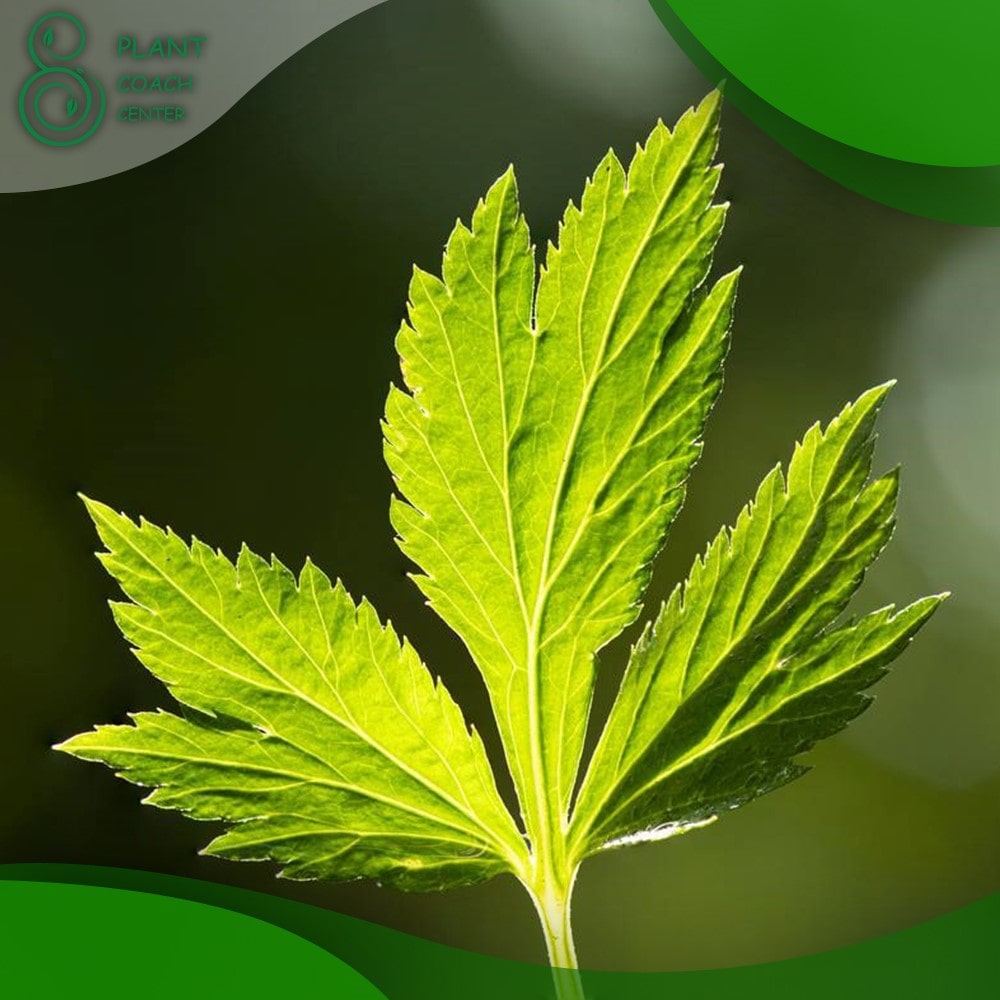When to Harvest Mugwort?
Mugwort (Artemisia vulgaris) is no ordinary herb; it’s a botanical marvel that has woven itself into the tapestry of human history, leaving its mark in culinary, medicinal, and cultural realms. From imparting an intriguing flavor to dishes to soothing weary souls, mugwort’s potential is boundless.
However, like any treasure, it must be harvested with care and finesse to unlock its true essence. In this guide, we embark on a journey that delves deep into the heart of mugwort harvesting. So, grab your shears and join us as we uncover the art and science of gathering mugwort in all its glory.
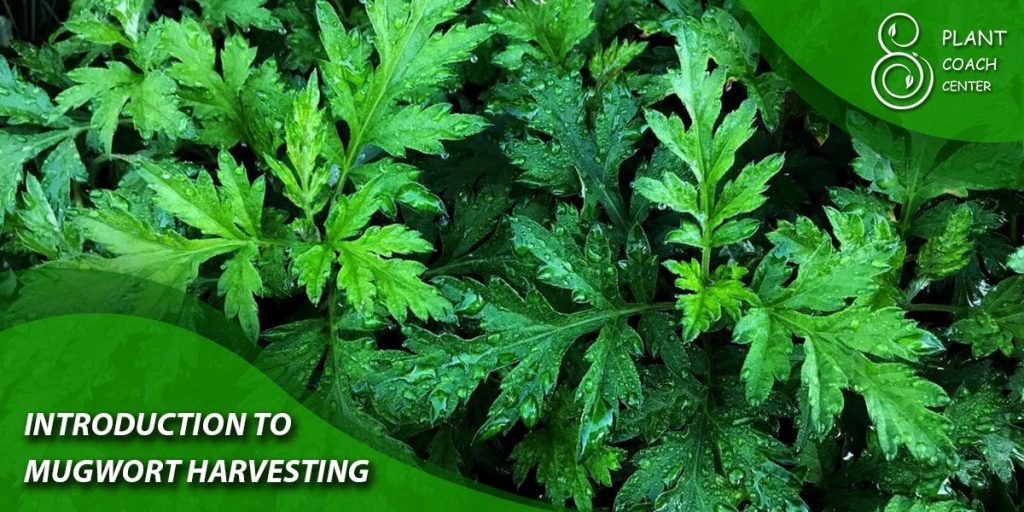
Understanding Mugwort Growth Cycle
Mugwort’s journey from a tender shoot to a blossoming wonder is a symphony of nature’s rhythms, and comprehending its growth cycle is paramount to knowing when to harvest.
Early Spring Emergence: The Awakening of Life
As winter’s grasp slowly wanes, mugwort emerges from the earth’s embrace as delicate, yet determined, new shoots. These nascent green sprouts symbolize the beginning of a new chapter in the herb’s life cycle.
Key Takeaway: Early spring marks the initial emergence of mugwort shoots, signifying the start of its growth cycle.
Vegetative Growth Period: Crafting Leaves and Roots
As spring unfolds its vibrant tapestry, mugwort embarks on a journey of leafy expansion. The vegetative growth period is characterized by the herb’s dedication to developing an intricate network of leaves.
Key Takeaway: Spring sees mugwort flourishing with abundant leaf growth and establishment of a strong root system.
Flowering and Seed Development: Nature’s Masterpiece
As the sun climbs higher in the sky and the days lengthen, mugwort undergoes a transformation that marks the pinnacle of its growth cycle.
Key Takeaway: The flowering stage reveals mugwort’s intricate blossoms and the development of seeds, signifying its readiness for harvest.
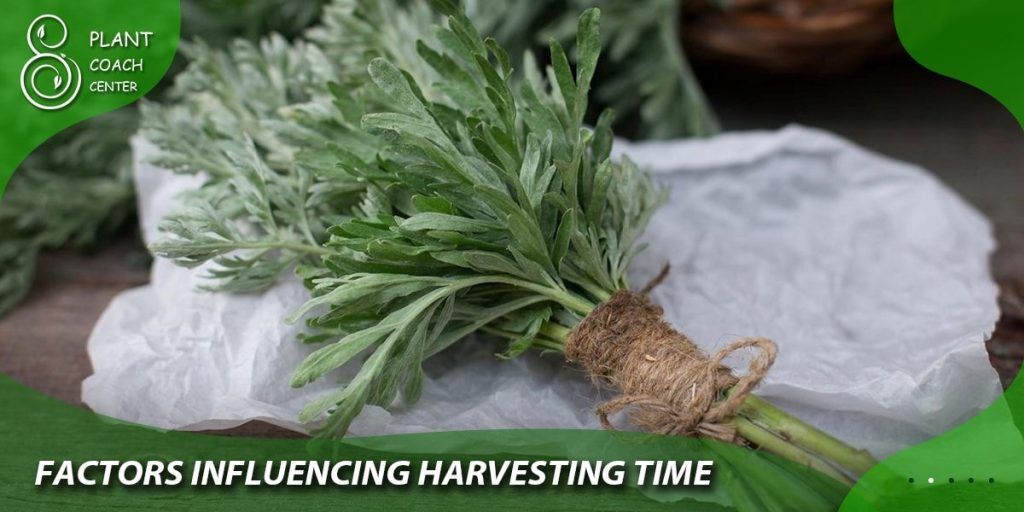
Factors Influencing Harvesting Time
Harvesting mugwort is an art guided by two essential factors, each contributing to the symphony of timing.
Plant Development Stages: Balancing Bud and Blossom
The journey of harvesting mugwort hinges on the delicate choice between two primary growth stages: pre-flowering and full flowering.
Pre-flowering Stage: This stage hums with anticipation as buds form, holding the herb’s potential tightly. Harvesting at this juncture yields leaves rich in aromatic compounds and nutrients. These leaves lend a harmonious flavor to culinary creations or herbal preparations.
Full Flowering Stage: The herb’s crescendo arrives with full blooms, emanating rich aromas and bold flavors. Essential oils surge, enhancing both flowers and leaves. This stage is perfect for infusing culinary endeavors or medicinal blends with mugwort’s robust essence.
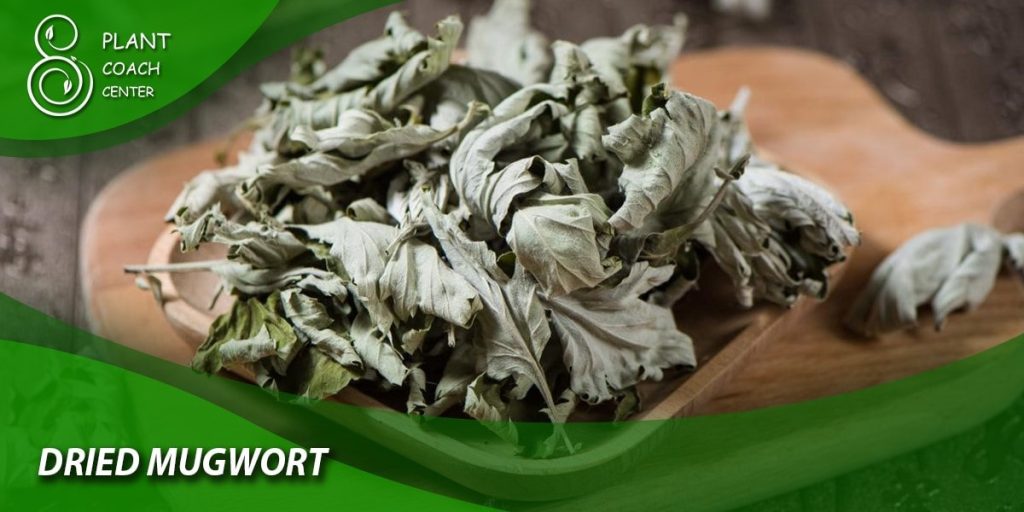
Environmental Conditions: Nature’s Guiding Hand
Beyond growth stages, environmental elements – temperature, humidity, and sunlight – shape mugwort’s readiness for harvest.
Temperature: Warmth elevates essential oil production, enhancing aroma and flavor. Harvest during warmer spells to capture mugwort’s aromatic potency.
Humidity: Moderate humidity preserves mugwort’s qualities. It strikes a balance, preventing excess moisture while retaining essential oils.
Sunlight Exposure: Sunlight triggers essential oil synthesis. Harvesting in sunny hours ensures you capture mugwort’s aromatic composition.
Signs of Readiness for Harvesting
Mastering the art of harvesting mugwort hinges on deciphering the language spoken by its visual cues and aromatic whispers.
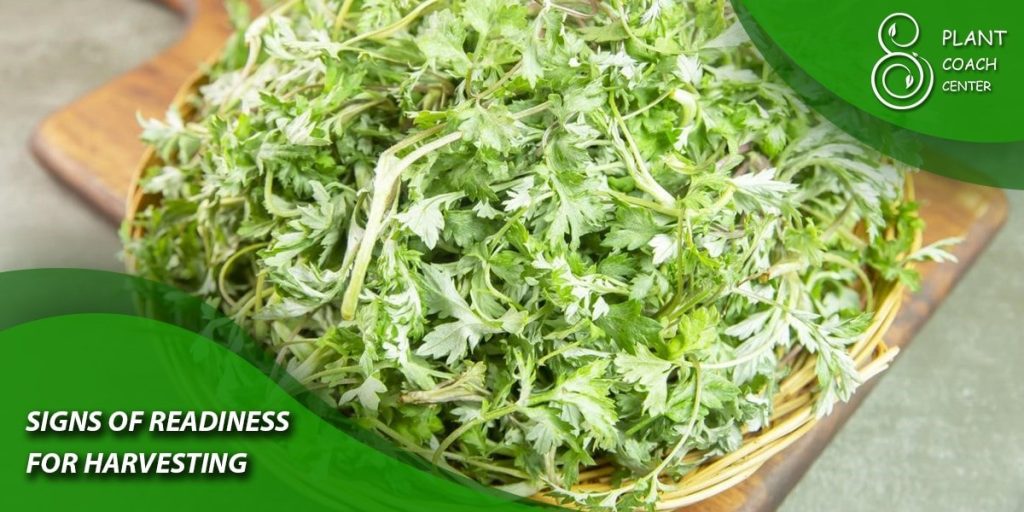
Visual Cues: Unveiling Nature’s Canvas
The tapestry of readiness unfurls through a careful observation of visual signs. Mugwort offers a rich tableau of clues, guiding your hand to the prime moment for harvest.
Development of Flower Buds and Full Bloom: The herb signals its imminent readiness through the emergence of delicate flower buds. As these buds mature, they unfurl into full blooms, a spectacle that mirrors nature’s crescendo. The transition from bud to bloom is an ode to the plant’s evolution, showcasing its journey from potential to fulfillment.
Color Changes in Leaves and Flowers: Nature’s brushstrokes paint mugwort’s leaves and flowers with evolving hues. As readiness approaches, these botanical canvases undergo transformation, deepening in color. The leaves take on a more vibrant green, while the flowers embrace an intensified hue. These shifts in color are a visual confirmation of the herb’s preparation for harvest.
Aroma and Fragrance: The Perfumed Prelude
Mugwort’s aromatic overture is a prelude to its readiness, an olfactory symphony that beckons you to the moment of harvest.
Strong, Aromatic Scent: As the herb matures, its aromatic presence becomes undeniable. A powerful and captivating scent emanates from the leaves and flowers, a hallmark of their rich essential oil content. This scent is more than just a fragrance; it’s a proclamation of potency, indicating that mugwort has reached its peak in aromatic readiness.
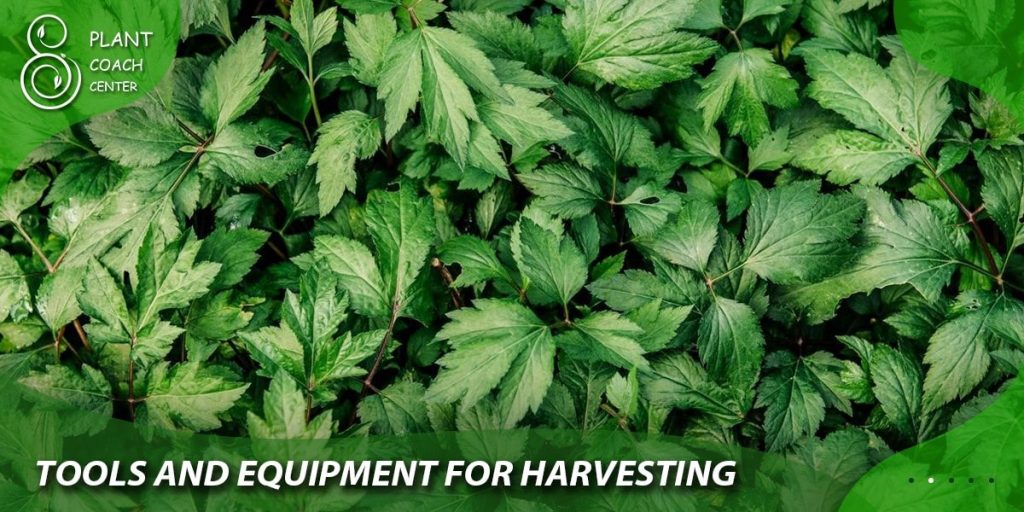
Tools and Equipment for Harvesting
A successful mugwort harvest relies on having these essential tools:
- Pruning Shears or Scissors: Opt for sharp tools to ensure clean cuts that minimize harm to the plant.
- Collection Baskets or Bags: Choose containers designed to cradle your harvest gently, maintaining its freshness and integrity.
- Protective Gear: Wear gloves and long sleeves to shield your skin from potential irritants and show respect for the plant.
Steps for Harvesting Mugwort
Follow these steps to harvest mugwort effectively:
- Choose the Right Time of Day: Opt for the morning hours when the essential oil concentration is higher.
- Select Healthy Plants: Harvest only from disease-free and undamaged plants to ensure quality.
- Use Proper Techniques: Cut stems just above a set of leaves to promote regrowth. Avoid over-harvesting from a single plant to maintain its health.
- Be Mindful of Local Regulations: Some regions may have guidelines or restrictions on wild harvesting.
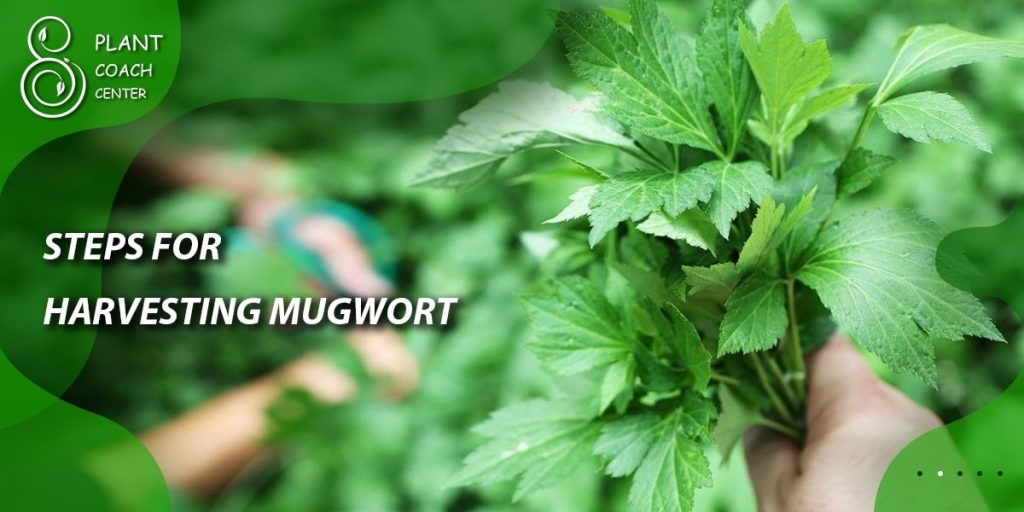
Drying and Processing Mugwort
Proper drying and processing ensure the longevity and quality of your harvested mugwort.
- Bundle Harvested Stems: Group stems into small bunches for easier handling.
- Hang Bundles Upside Down: Dry the bundles in a well-ventilated, dry area to prevent mold and mildew.
- Monitor for Mold or Mildew: Regularly check the drying bundles to ensure there’s no unwanted growth.
- Store in Airtight Containers: After drying, store mugwort in airtight containers away from light and moisture to preserve its potency.
- Additional Processing (Optional): You can strip leaves from stems after drying for specific uses.
Utilizing Harvested Mugwort
Explore the diverse applications of your harvested mugwort:
- Culinary Uses: Add mugwort to dishes and teas for a distinct flavor profile.
- Medicinal Applications: Capitalize on its traditional use for relaxation and digestive benefits.
- Crafting and Cultural Uses: Incorporate mugwort into rituals or create aromatic products for various cultural practices.
Troubleshooting Mugwort Harvesting

While harvesting mugwort can be a rewarding experience, various challenges might arise along the way. Here’s a troubleshooting guide to help you navigate common issues and find solutions:
1. Premature Harvesting:
Problem: Harvesting mugwort too early can result in a lack of desired flavor and aroma.
Solution: Wait until the plant has reached its pre-flowering or full flowering stage, and look for visual cues such as developed buds and vibrant color changes.
2. Over-Harvesting:
Problem: Harvesting too many stems from a single plant can weaken its growth and affect its overall health.
Solution: Practice responsible harvesting by selecting multiple plants and taking only a portion of each plant’s growth. This ensures the sustainability of the mugwort population.
3. Ignoring Environmental Factors:
Problem: Disregarding environmental conditions like temperature and humidity can lead to suboptimal harvest quality.
Solution: Plan your harvest during warm, dry periods for maximum essential oil content. Monitor humidity levels to prevent mold during drying.
4. Not Using Sharp Tools:
Problem: Using dull cutting tools can cause uneven cuts and damage to the plant.
Solution: Keep your pruning shears or scissors sharp and clean. A clean cut promotes faster healing and reduces stress on the plant.
5. Poor Drying Techniques:
Problem: Improper drying can result in mold growth, loss of flavor, and diminished potency.
Solution: Hang harvested stems upside down in a well-ventilated area away from direct sunlight. Regularly check for mold and ensure proper airflow.
6. Inadequate Protective Gear:
Problem: Skin irritation caused by mugwort’s oils can be a concern without proper protective gear.
Solution: Wear gloves and long sleeves to shield your skin while harvesting. This also demonstrates respect for the plant and safeguards your well-being.
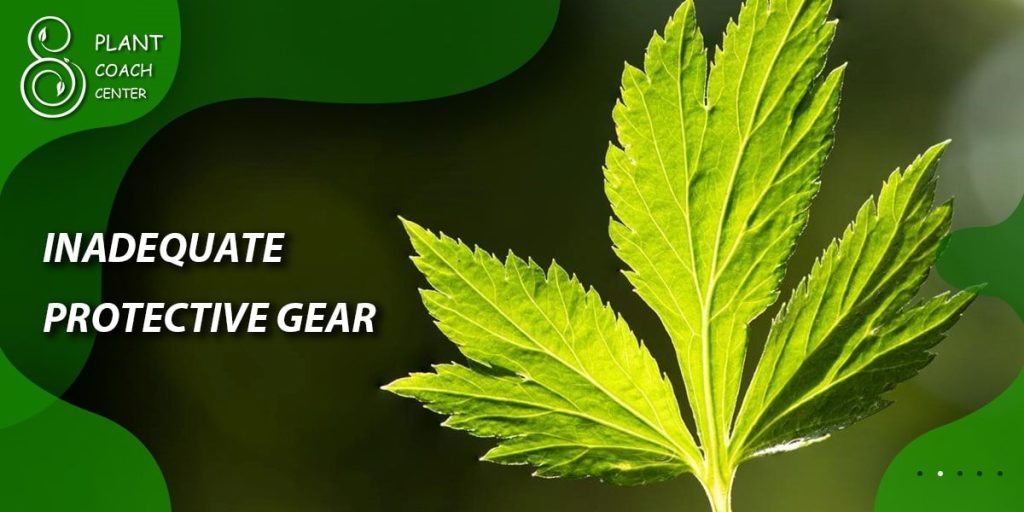
7. Neglecting Local Regulations:
Problem: Harvesting mugwort without considering local guidelines can impact the environment and plant populations.
Solution: Research and adhere to local regulations regarding wild harvesting. Respect any protected areas or limitations on the amount you can harvest.
8. Skipping Readiness Signs:
Problem: Harvesting without paying attention to visual cues and aromas can result in suboptimal flavor and potency.
Solution: Observe the plant’s growth cycle, development of flower buds, color changes in leaves and flowers, and the strength of its aromatic scent.
9. Disregarding Sustainable Practices:
Problem: Ignoring sustainable harvesting practices can harm the plant’s population and ecosystem.
Solution: Harvest in a way that ensures the survival of mugwort for future generations. Take only what you need and consider replanting seeds to contribute to its growth.
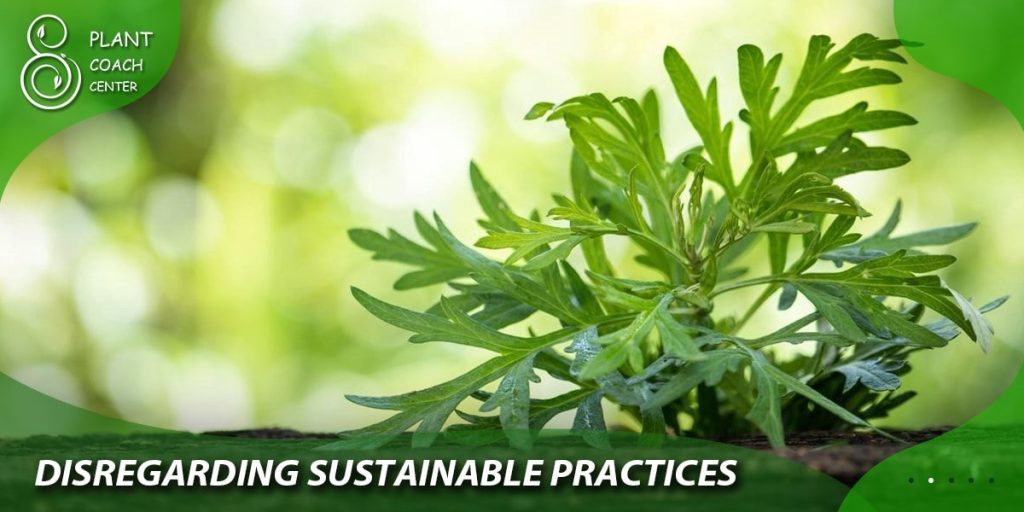
Conclusion
In conclusion, harvesting mugwort is a skill that requires an understanding of its growth cycle, visual cues, and fragrance signals. By following proper techniques and respecting local regulations, you can ensure a bountiful and high-quality harvest. Remember to employ sustainable practices to preserve the health of mugwort populations for future generations.
When is the best time to harvest mugwort?
Harvest mugwort during the pre-flowering or full flowering stages for optimal flavor and aroma.
How do I know if mugwort is ready for harvest?
Look for developed flower buds, vibrant color changes, and a strong aromatic scent.
Can I harvest mugwort during any time of day?
Harvest in the early morning when essential oil concentration is higher.


